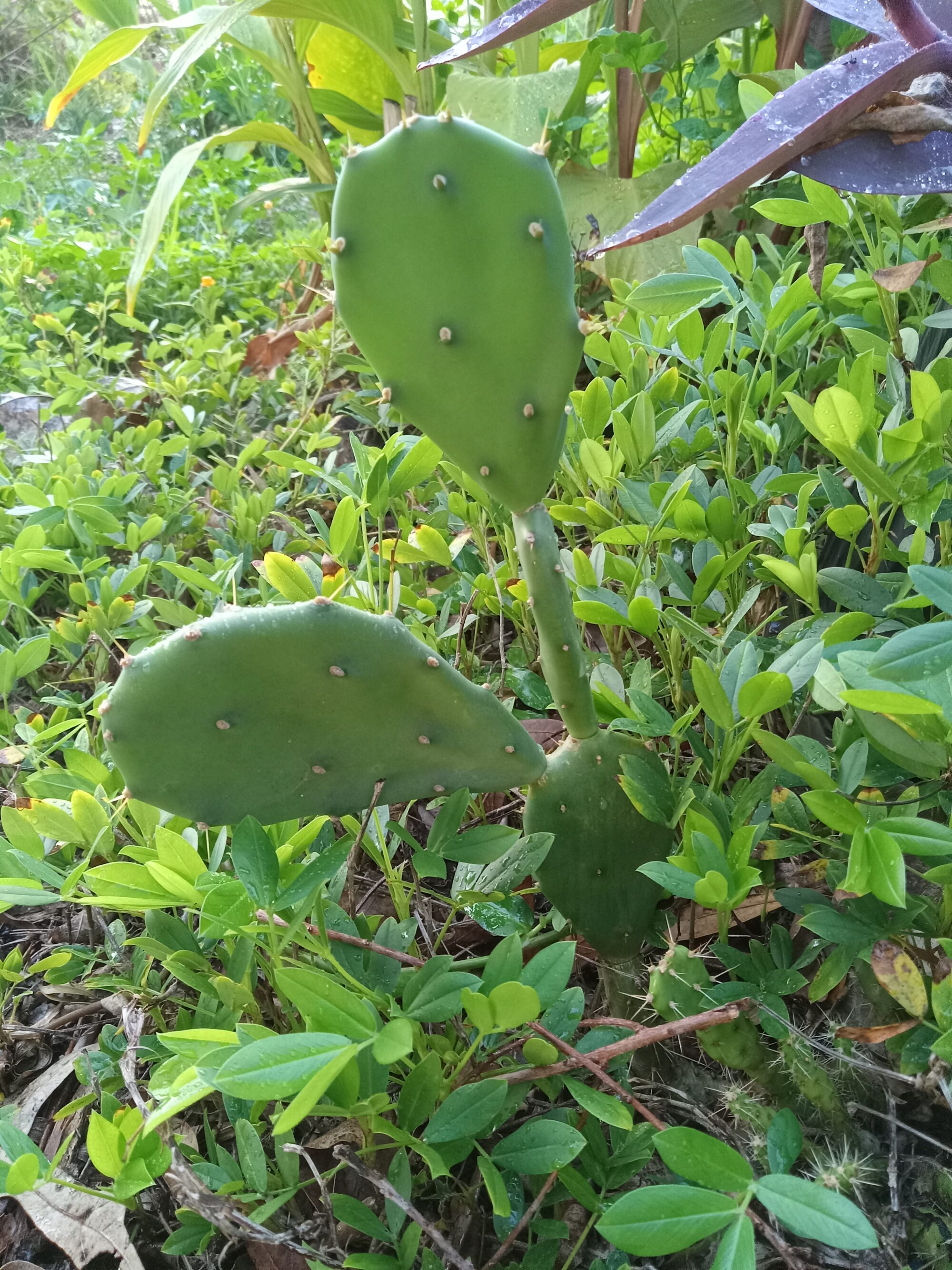Uses : Food, Liquor, Forage, Firewood, Fencing. Native to Mexico.
The prickly pear cactus is an amazing little survivor. It is a true cactus and is grown all over the world in dry climates for the leaves and fruit. It has naturalized itself to the scrub forests of West Florida and is as good as native. Ever so slowly it can grow with no care on your part whatsoever.
Spreading prickly pear (Opuntia humufusa), has many, if not all of the same good qualities as the more common prickly pear, but is a native of the pine forests here in Florida. It is a low-growing perennial, bane of hikers not watching their footing. It rarely gets even half a meter in height, and is able to reproduce vegetatively when leaf pads that become detached from the parent root themselves.
The leaf pads can be eaten by people once the spines are removed. Typically the young pads, also called nopales, are selected for human consumption before the spines harden. It is usually sliced into strips and cooked as you would a green bean.
Later, the leaf pads can be used as cattle forage if the spines are burned away or otherwise removed. This has helped farmers in Mexico when lack of rainfall browns the fields. The leaf pads are quite high in moisture which will also help sustain cattle. The larger prickly pear varieties can be used to create a natural hedge which will keep cattle fenced, as they do not wander through the thick spiny pads.
The little red fruits can be eaten raw after skinning and are usually served chilled. Many cultures worldwide distill prickly pear fruit juice into a liquor. The juice can also be used to ferment into a wine, known as colonche.
The process for making colonche has changed very little over the centuries. The fruit is harvested, peeled, crushed, the juice collected and boiled for two or three hours. Then the juice is allowed to ferment for several days. Sometimes other colonche is added as a starter. After primary fermentation it can be served.
In Mexico the cactus are raised as a fodder for an insect known as cochineals, which create a natural red dye that has some trade value.
Probably the best way to grow prickly pear would be on the roof of your hobbit house, as the danger of stepping on the cactus is real. Also the cactus will die if they receive too much rainfall, it is on of the few plants that really prefers truly well drained soil.
